
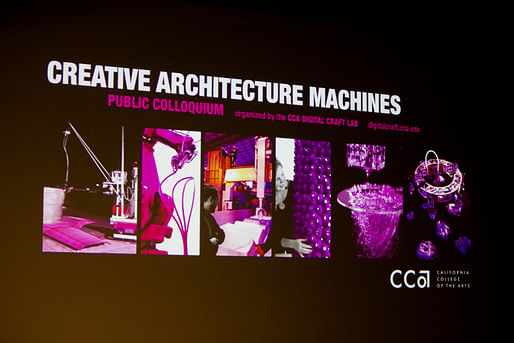
The Creative Architecture Machines Colloquium, held at CCA's Timken Hall on November 3rd and hosted by the Digital Craft Lab and arranged by Jason Kelly Johnson of CCA and Future Cities Lab, was a special chance to gather luminaries in the field of robotics and 3D printing in architecture from around the Bay Area in the same room to hear their varying research trajectories and thinkings about the future of manufacturing architecture. And if you're wondering what a "colloquium" is, don't worry, so did most of the audience. Explained Jason, it's a much less formal version of a symposium. The atmosphere was light and each of the five speakers gave short presentations about their current work, some rendered that very morning.
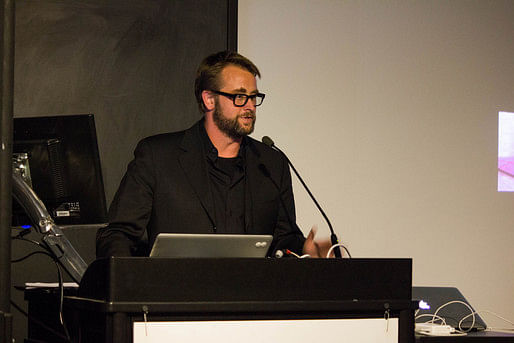
Jason Kelly Johnson set the tone for the discussion with an introduction to the work of the Creative Architecture Machines studio at CCA, a class I was a part of a year ago.
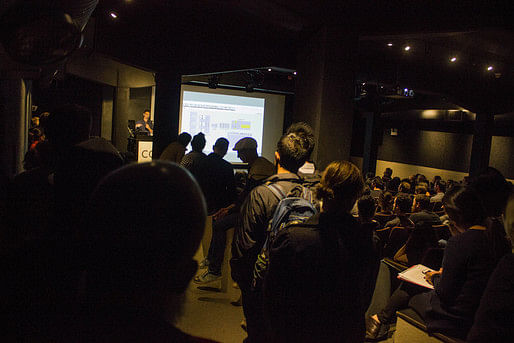
Joshua Zabel, Director of Digital Fabrication at Kreysler & Associates, recalled the company's history of hacking CNC machines together for sculptural production since the early 80's. This has carried through to their work now, where they will hack Grasshopper to generate their own g-code instead of putting up with the faulty software that comes with the massive machines producing the facade for Snohetta's redevelopment of SFMOMA facade. A small portion of the talk that became integral later was the unusual chance they now had to patent the fireproofing technology they invented to create the carbon fiber facade.
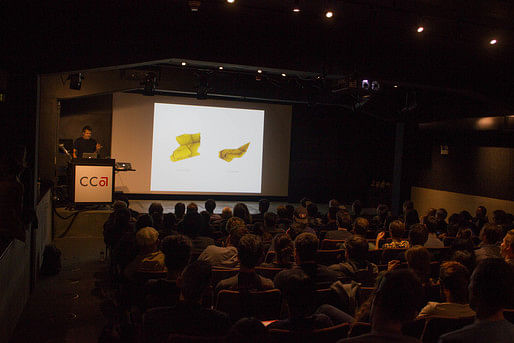
Andrew Atwood, of UC Berkeley and First Office, presented works that hack the physical and digital representational systems architects unquestioningly use everyday, from 3D printers to 3D rendering engines. His eloquently presented work ranged from purely academic inquiry to ephemeral built spaces, playing on the implementation of incursion on digital and physical renderings by layering bitmaps of bitmaps on bitmaps, or building up layers of different "base white" paints to create subtle, ghostly images in his built spaces.

Ron Rael, of UC Berkeley, Emerging Objects, and Rael San Fratello, presented his office's seminal work in developing and testing new 3D printable materials; proposing ever larger, self-supporting panel systems. Interestingly, the most noteworthy sections of the talk concerned intellectual property rights and how spearheading these fields of research should remain the personal property of their inventors.
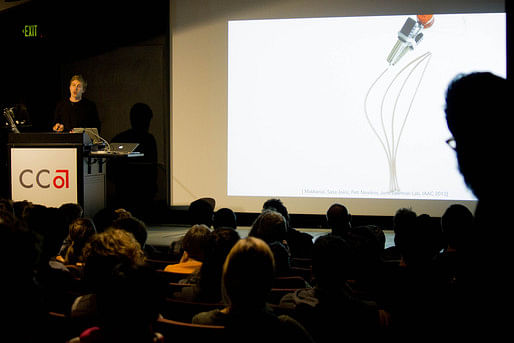
Fedor Novikov, of Labori, Inc., is very much at the forefront of this ideology of monetizing research. Working with his brother Peter, who guided much of the robotics fabrication research at the IAAC, he is looking for opportunities to test such construction methods in the cutthroat Bay Area startup scene.
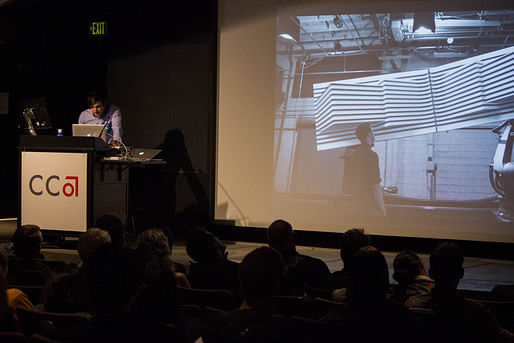
And finally, Brandon Kruysman and Jonathan Proto, of Bot & Dolly, presented their cinematic beginnings at Sci-Arc's Robot House, which contributed to the visualization explorations that inform their current work. Their video experiments attempt to spatialize the two-dimensional screen, exploiting robotically precise movements to capture images in space over time.
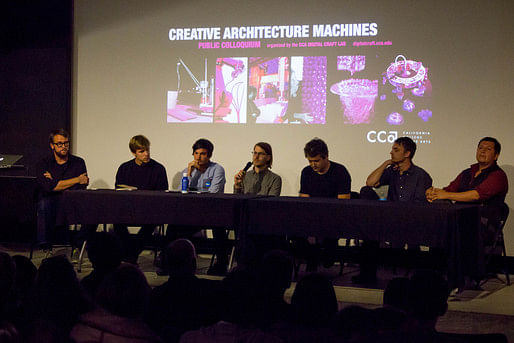
It's incredibly exciting to have all of the world's most innovative researchers in the fields of 3D printing and robotic fabrication gathering in the Bay Area, a seemingly natural fit for such endeavors. The evening ended with a lively discussion, mostly dominated by conversations of intellectual property rights and the monetization versus open-sourcing of design technologies. In some ways it was a more robust dialogue than the ones at ACADIA a few weeks ago, in that these were rife with political stakes: what is the role of intellectual property in academia? Who should profit from this research? What is the proper role academic institutions should take in negotiating and encouraging the patenting of student/educator design? But whether you're generating new building business models or patenting new building materials the real question is: what's the larger project? Which is what the always astute professor Irene Cheng attempted to tease out of the panelists with her question: what are the broader implications? She left it open for them to choose their own arena: social, economic, aesthetic, etc. What seemed to be the consensus was that this is difficult to answer when you are at the tip of the spear of research. Moving at the speeds one needs to these days to stay on top or ahead of the game, perhaps you don't have time to ask these questions, Labori Inc.'s forward-looking business research aside. Which is a shame, because there is great potential for rapid prototyping to engage politics; polygons versus policy; polimetricism over parametricism. The innovator to excite more than technological euphoria in the public realm will surely emerge a success in any or all of these research arenas.
No Comments
Block this user
Are you sure you want to block this user and hide all related comments throughout the site?
Archinect
This is your first comment on Archinect. Your comment will be visible once approved.